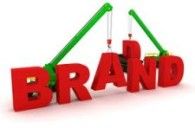Remember the old days when all we had to do was dress for success and learn how to write in a business style to present a professional image? Those days are gone. In this information-rich, faster-moving, more competitive, and the increasingly mobile working world there is another major component to a professional image today and that is how you build your personal brand statement.
If you are a mobile worker, you need to have a personal brand that “sings,” which is one that tells your story in a way that will have people humming your song long after they leave your page. Essentially, this is a major part of your professional image in the early 21st century if you are a business professional.
How do you build your personal brand? There are many books out on the subject but essentially you meld together three things:
- What you want to contribute to work organizations – that is, how you want your career to move forward
- What happens as a result of your work (for this, ask past co-workers)
- What expertise you bring to work efforts
Your personal brand provides an overview of who you are and where you want to go in your career. This is what the working world needs to know to interact meaningfully with you. Put it in the summary paragraph of your electronic profiles and place it at the top of your resume. If readers see a fit or something of interest in those statements, they often will read further. With that fact in mind, a good brand statement should shape the rest of your resume/profile so that it supports where you want to go professionally.
Beware of the Generic Brand Statement:
As you develop your brand statement beware of using descriptors that are too generic (e.g., I’m a good communicator and a team player) or the overused (I’m a leader) – These are non-marketable – that is, they are so general that they relate to every worker (or should) and they don’t really tell the reader much.
Move from the generic to something more specific: What leadership behaviors characterize you? Why is your good communication crucial in your work setting? What happens as a result of your work that is important to organizational success? What do you add to team deliberations?
Some people don’t want to be very specific in their brand statement; they think they have multiple skills and don’t want to turn any potential work away. That is not what hiring managers or networking individuals want in a profile now. They are under time pressures and the competition in the job market suggests that the perfect fit should be out there. The trick in crafting a personal brand statement is to be clear about how you go about your work and what your work is, but also to focus your statement on a relatively common problem in work organizations.
The days of routine work are quickly vanishing as Tom Friedman, author of The World is Flat, frequently reminds us. Developing your personal brand is a way of charting your move away from the routine. It is a challenging and constantly evolving process as you build skills and transition into new phases of your career but it can be fun too because it lets you set your career direction.
Resources:
Click here for some examples of professional branding statements. We also recommend researching Linked In profiles and conducting a Google search for more ideas.
Sally Power, Ph.D. is a writer, researcher, and personal consultant accelerating successful career transitions.
